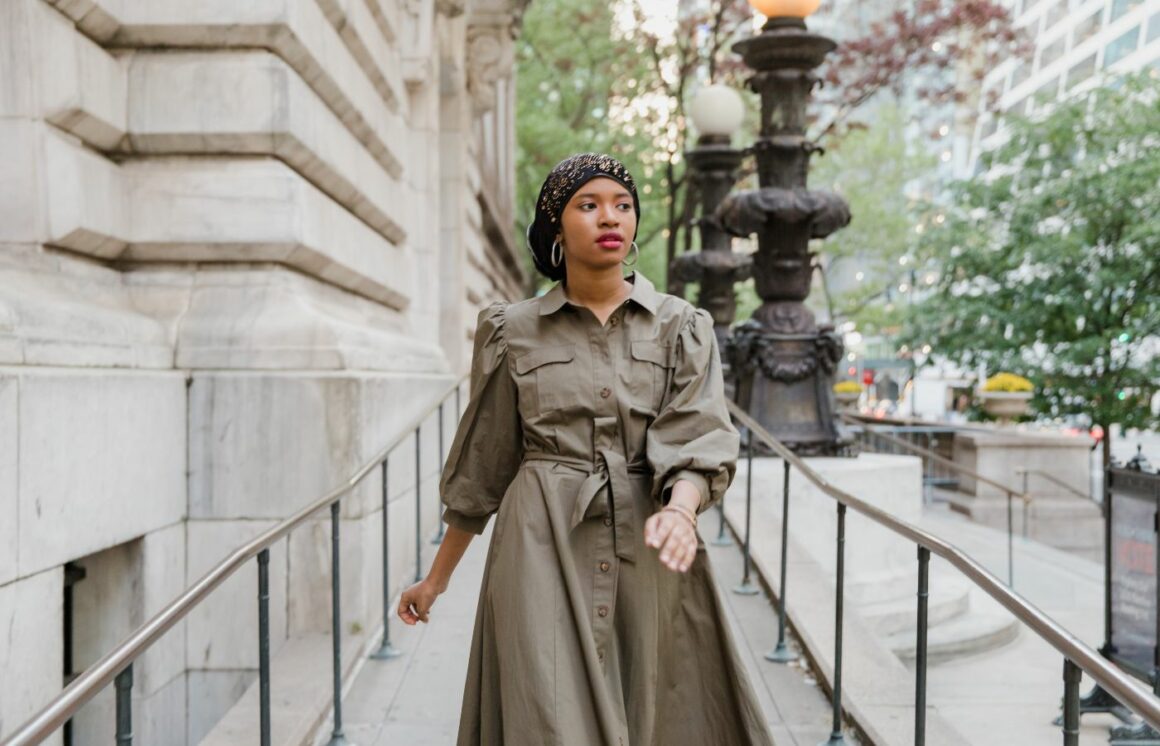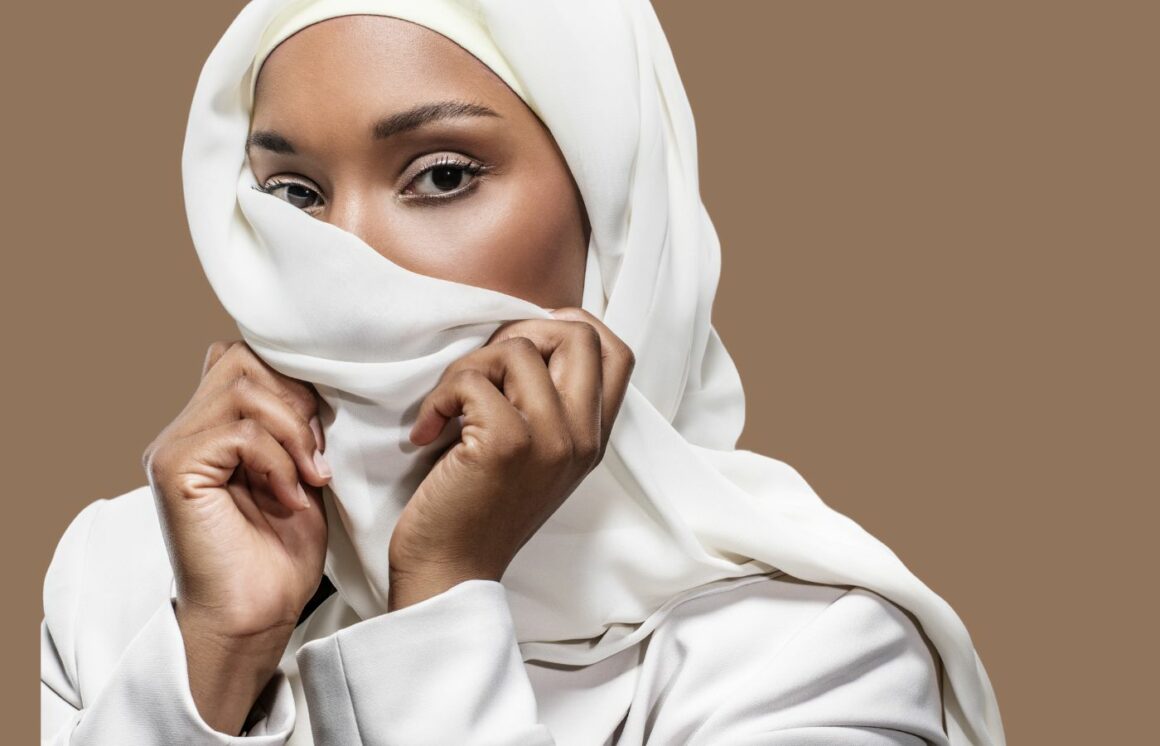Table of Contents Show
Modest fashion has become a global phenomenon, challenging stereotypes and redefining how we perceive clothing. It is a movement that allows people to express themselves in their own unique way while still sticking to their cultural or religious convictions. But what precisely is modest fashion, and how does it adapt to new trends
Let us delve into the dynamic and ever-changing world of clothing.
What is Considered Modest Clothing?
There’s no universal definition of modest clothing. It varies according to culture, religion, and personal tastes. However, some general characteristics often associated with modest dressing, includes:
Coverage: Modest clothes tend to cover more of the body than revealing styles. This may involve covering the arms, legs, and chest to a larger extent.
Opacity: Sheer or see-through fabrics are strictly avoided in favor of more opaque materials that provide greater coverage. Or you can add layers under the sheer fabric to make it look opaque.
Looser fits: Modest clothing typically has looser silhouettes that do not cling firmly to the body’s curves and make them more visible.
However, modesty goes beyond just the amount of skin shown. It’s also about the overall presentation and intention behind the clothing choice.
Examples of Modest Clothing:
- Long dresses, maxi and skirts
- Long-sleeved shirts
- High waisted & loose trousers
- Hijabs, turbans, and other head coverings
It is important to remember that modesty is a subjective concept. What one individual considers modest may differ from another. The key is personal comfort and the ability to express oneself within the selected framework.

What are the Benefits of Modest Fashion?
Modest clothing isn’t just about covering up. It offers a number of benefits, ranging from boosting confidence and comfort to increasing self-expression and cultural identification for those who choose to embrace it:
Empowerment: Wearing modest clothing encourages people to feel confident and comfortable in their own skin, regardless of current fashion trends. It encourages self-expression within personal bounds.
Comfort: Modest clothing often prioritizes loose fits and breathable fabrics, resulting in greater comfort and functionality in everyday living.
Versatility: Unlike popular belief, modest clothing can be extremely adaptable. It can accommodate a wide range of tastes and events because of its variety of styles, colors, and patterns.
Cultural and Religious Expression: Modest fashion allows people to display their cultural or religious convictions through their clothing. The silhouette may be similar but the colors, prints and patterns may reflect their cultural and ethnic connections
Sustainability: The emphasis on quality fabrics and timeless patterns, which are generally linked with modest fashion, might inspire a sustainable approach to clothing consumption.
Who is a Modest Girl?
There is no single definition for a “modest girl.” Modesty is a personal preference, not a personality trait. A modest girl can be anyone who chooses to dress in a way that is consistent with her principles and beliefs, regardless of age, background, or personal style.
They may be working professionals, athletes, artists, or students. The unifying feature is their willingness to express themselves through attire that makes them feel comfortable and empowered.
However, Islam emphasizes modesty (haya) as a core value for both men and women. Its emphasis is on the intention behind the clothing. It’s not just about covering the body, but about dressing in a way that promotes self-respect, and dignity, and avoids attracting undue attention.
Is Modest Fashion a Trend?
While modest fashion has grown its popularity in recent years, it isn’t a passing trend. It is a movement motivated by a desire for more inclusive and diverse representation in the fashion world. Here’s why it’s here to stay.
Growing Market: The modest fashion market is expanding rapidly, driven by an increasing global population that identifies with modest attire.
Evolving Styles: Modest fashion is no longer associated with simple or boring clothing. Designers are making unique and stylish pieces that appeal to a diverse variety of tastes.
Celebrity Influence: Celebrities and influencers around the world who favor modest clothing are inspiring a new generation to try this approach.
Empowerment and Self-Expression: Modest dress provides a strong tool for self-expression and originality, which resonates with
How Did Modest Fashion Start?
The concept of modest dress has persisted throughout history, with numerous cultures and religions embracing body-covering traditions for social, religious, or practical reasons. However, in the present day, modest fashion has emerged as a unique style category with a global reach. Here are some important milestones:

Early Influences: Religious traditions and societal norms have long influenced modest clothing choices.
20th Century Developments: The rise of Islamic fashion in the late twentieth century, with clothes such as the Abaya and Hijab gaining popularity, helped to shape a distinct modest fashion identity.
Mainstream exposure: In the 21st century, modest fashion has gained mainstream exposure, with major fashion brands catering to this rising market and dedicated modest fashion weeks taking place worldwide.
Social media and inclusivity: Social media platforms have played an important role in promoting modest fashion and creating a sense of solidarity among individuals who support this style. Influencers and bloggers display different and stylish modest outfits, inspiring others to express themselves.
The Future of Modest Fashion:
The future of modest fashion looks bright. As the industry continues to grow and evolve, we can expect to see:
Greater Inclusivity: Modest fashion will cater to an even wider range of body types, ethnicities, and cultural backgrounds.
Sustainable Practices: Sustainability will become a more prominent focus, with designers using eco-friendly materials and production methods.
Technological Advancements: Technology will play a role in creating innovative fabrics and designs that cater to the needs of modest dressers.
Continued Mainstream Appeal: Modest fashion will become even more mainstream, with high-street brands and major retailers offering a wider selection of modest clothing options.
As we look to the future, modest fashion shows no signs of fading out. With its expanding market share, innovative designs, and commitment to diversity, it is positioned to become an even more powerful force in the fashion industry. Whether you’re a seasoned modest fashion enthusiast or just interested in this emerging trend, there’s something for everyone in this dynamic movement. So, embrace the freedom to express yourself, enjoy your uniqueness, and experience the beauty and empowerment that modest dress has to offer.
Conclusion:
Modest fashion has evolved beyond the concept of simply covering the body. It’s a strong statement about self-expression, cultural identity, and personal comfort. It enables people to navigate the ever-changing fashion landscape while staying true to their principles and beliefs. The rise of modest fashion represents a shift towards inclusivity in the fashion industry. It celebrates different body types, nationalities, and cultural origins, providing a venue for everyone to choose clothes that suit their individual taste. This inclusion generates a sense of community, with social media platforms playing an important role in connecting people who value modest wear.
Beyond the realm of style, modest fashion also promotes a more mindful approach to clothing consumption. The emphasis on quality fabrics and timeless styles encourages a “buy less, buy better” philosophy, which aligns with the growing sustainability movement. So, next time when you decide to dress modestly, feel free to explore and express your personal taste, feeling comfortable in your own skin.











